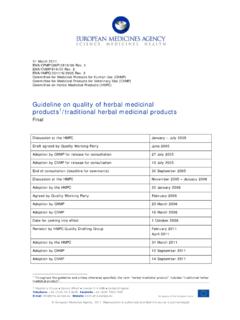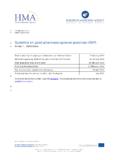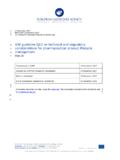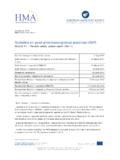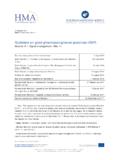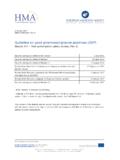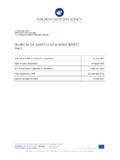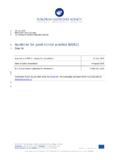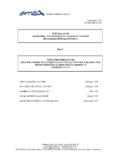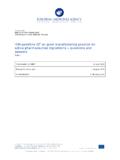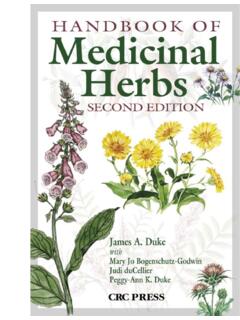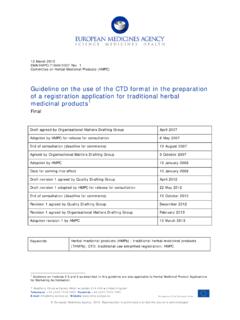Transcription of Guideline on Active Substance Master File Procedure
1 Official address Domenico Scarlattilaan 6 1083 HS Amsterdam The Netherlands An agency of the European Union Address for visits and deliveries Refer to Send us a question Go to Telephone +31 (0)88 781 6000 European Medicines Agency, 2021. Reproduction is authorised provided the source is acknowledged. 8 November 2018 CHMP/QWP/227/02 Rev 4/ Corr * EMEA/CVMP/134/02 Rev 4/ Corr * Committee for medicinal Products for Human Use (CHMP) Committee for medicinal Products for Veterinary Use ( CVMP) Guideline on Active Substance Master File Procedure Discussion at the HMPC November 2005 January 2006 Adoption by the HMPC 22 January 2006 Draft agreed by Quality Working Party 9 February 2006 Adoption by CHMP for release for consultation 23 March 2006 Adoption by CVMP for release for consultation 20 April 2006 End of consultation (deadline for comments) 30 August 2006 Agreed by Quality Working Party 1 December 2011 Adoption by CHMP for release for consultation 15 December 2011 Adoption by CVMP for release for consultation 12 January 2012 End of consultation (deadline for comments) 12 March 2012 Rev.
2 03 Agreed by Quality Working Party 04 May 2012 Rev. 03 Adoption by CVMP 14 June 2012 Rev. 03 Adoption by CHMP 21 June 2012 Rev. 03 Date for coming into effect 1 October 2012 Rev. 04 Agreed by Quality Working Party 03 October 2018 Rev. 04 Adoption by CHMP 18 October 2018 Rev. 04 Adoption by CVMP 08 November 2018 Guideline on Active Substance Master File Procedure CHMP/QWP/227/02 Rev 4/ Corr * EMEA/CVMP/134/02 Rev 4/ Corr * Page 2/23 Rev. 04 Date for coming into effect 17 June 2019 This Guideline replaces Guideline CPMP/QWP/227/02 Rev 4 (EMEA/CVMP/134/02 ). Keywords Active Substance Master file, ASMF, letter of access, submission letter Guideline on Active Substance Master File Procedure CHMP/QWP/227/02 Rev 4/ Corr * EMEA/CVMP/134/02 Rev 4/ Corr * Page 3/23 Note: * The correction concerns a clarification in Annex 2, detailing that sharing assessment reports between the EEA National Competent Authorities includes sharing the assessment outcomes with UK competent authorities for procedures concerning medicinal products authorised in the territory of Northern Ireland, in which EU Law applies to the extent foreseen in the Protocol on Ireland/Northern Ireland included in the Agreement on the withdrawal of the UK from the EU.
3 Guideline on Active Substance Master File Procedure CHMP/QWP/227/02 Rev 4/ Corr * EMEA/CVMP/134/02 Rev 4/ Corr * Page 4/23 Table of contents Executive summary .. 5 1. Introduction (background) .. 5 2. 5 3. Legal basis .. 5 4. Content of the Active Substance Master File .. 6 5. Use of the Active Substance Master File Procedure .. 6 6. Content of the MA-dossier when the Active Substance Master File Procedure is used .. 8 7. Changes and updates to the Active Substance Master File .. 9 ANNEX 1 .. 10 ANNEX 2 .. 15 ANNEX 3 .. 16 ANNEX 4 .. 20 ANNEX 5 .. 21 ANNEX 6 .. 22 ANNEX 7 .. 23 Guideline on Active Substance Master File Procedure CHMP/QWP/227/02 Rev 4/ Corr * EMEA/CVMP/134/02 Rev 4/ Corr * Page 5/23 Executive summary 1. Introduction (background) The main objective of the Active Substance Master File (ASMF) Procedure , formerly known as the European Drug Master File (EDMF) Procedure , is to allow valuable confidential intellectual property or 'know-how' of the manufacturer of the Active Substance (ASM) to be protected, while at the same time allowing the Applicant or Marketing Authorisation (MA) holder to take full responsibility for the medicinal product and the quality and quality control of the Active Substance .
4 National Competent Authorities/EMA thus have access to the complete information that is necessary for an evaluation of the suitability of the use of the Active Substance in the medicinal product. 2. Scope This Guideline is intended to assist Applicants/MA holders in the compilation of the Active Substance section of their dossiers for a Marketing Authorisation Application (MAA) or a Marketing Authorisation Variation (MAV) of a medicinal product. It is also intended to help ASMF holders in the compilation of their ASMFs. ASMF Procedure and herbal substances/preparations In accordance with Directive 2001/83/EC as amended, the quality of traditional herbal medicinal products for human use has to be documented in accordance with existing European legislative requirements. These criteria are laid down in the following guidelines (which are applicable for all Human and Veterinary herbal medicinal products): Guideline on quality of herbal medicinal products/traditional herbal medicinal products (CPMP/QWP/2819/00, EMEA/CVMP/814/00, in their latest revisions) and the Guideline on specifications: test procedures and acceptance criteria for herbal substances, herbal preparations and herbal medicinal products/ traditional herbal medicinal products (CPMP/QWP/2820/00, EMEA/CVMP/815/00, in their latest revisions).
5 It should be noted that the principles which are outlined in table 3 of Annex 1 in relation to traditional herbal medicinal products are equally applicable to other herbal medicinal products, both for Human and Veterinary use, which do not follow the simplified registration Procedure . References: 1. Guideline on quality of herbal medicinal products/traditional herbal medicinal products (CPMP/QWP/2819/00, EMEA/CVMP/814/00, in their latest revisions); 2. Guideline on specifications: test procedures and acceptance criteria for herbal substances, herbal preparations and herbal medicinal products/ traditional herbal medicinal products (CPMP/QWP/2820/00, EMEA/CVMP/815/00, in their latest revisions); 3. Guideline on summary of requirements for Active substances in the quality part of the dossier (CHMP/QWP/297/97, EMEA/CVMP/1069/02, in their latest revisions). 3. Legal basis Annex I to Directive 2001/83/EC as amended Part I, Basic principles and requirements, (8) Active Substance Master File (for Human medicinal products) and Annex I to Directive 2001/82/EC as amended, Part General Requirements, Active Substances (for Veterinary medicinal products).
6 Guideline on Active Substance Master File Procedure CHMP/QWP/227/02 Rev 4/ Corr * EMEA/CVMP/134/02 Rev 4/ Corr * Page 6/23 4. Content of the Active Substance Master File The overall content of the ASMF should contain detailed scientific information as indicated under the various headings of the relevant Notice to Applicants for Marketing Authorisations for medicinal Products in the Member States of the European Union (NtA). ASMFs linked to human medicinal products should be presented in the format of the Common Technical Document (CTD), see Annex 1 table 1. ASMFs linked to veterinary medicinal products should normally be presented in accordance with the format given in Annex 1 table 2, however in accordance with Parts and 2 of Directive 2001/82/EC as amended, all parts of such ASMFs (AP, RP, and their summaries) may be presented in the CTD format in the following circumstances1: Where the Active Substance has been included in a medicinal product for human use authorised in accordance with the requirements of Annex I to Directive 2001/83/EC as amended; In the case of any application for an animal species or for indications representing smaller market sectors; Where the competent authority has publicly announced this possibility.
7 The scientific information in the ASMF should be physically divided into two separate parts, namely the Applicant s Part (AP) and the Restricted Part (RP). The AP contains the information that the ASMF holder regards as non-confidential to the Applicant/MA holder, whereas the RP contains the information that the ASMF holder regards as confidential, see Annex 1. It is emphasized that the AP is still a confidential document that cannot be submitted by anyone to third parties without the written consent of the ASMF holder. In all cases the AP should contain sufficient information to enable the Applicant/MA holder to take full responsibility for an evaluation of the suitability of the specification for the Active Substance to control the quality of this Active Substance for use in the manufacture of a specified medicinal product. The RP may contain the remaining information, such as detailed information on the individual steps of the manufacturing method (reaction conditions, temperature, validation and evaluation data of critical steps) and the quality control during the manufacture of the Active Substance .
8 The National Competent Authorities/EMA may not accept that particular information has not been disclosed to the Applicant/MA holder. In such cases, the National Competent Authorities/EMA may ask for an amendment to the AP. In addition to the AP and RP, the ASMF should contain a table of contents, and separate summaries for both the AP and the RP. In cases where the ASMF is provided in the CTD format, both summaries should be presented as a Quality Overall Summary (QOS). In cases where the veterinary NtA format is used, they should be detailed and critical summaries. Each version of the AP and RP should have unique and independent version control numbers. 5. Use of the Active Substance Master File Procedure An ASMF can only be submitted in support of an MAA or MAV. The relationship between the quality of the Active Substance and its use in the medicinal product needs to be justified in this MAA or MAV. Although the ASMF Procedure is developed to keep intellectual property of the ASM confidential, it is also permissible to use the Procedure when there is no confidentiality issue between the Applicant/MA 1 A correlation table should also be provided for ASMFs for Veterinary applications presented in the CTD format.
9 Guideline on Active Substance Master File Procedure CHMP/QWP/227/02 Rev 4/ Corr * EMEA/CVMP/134/02 Rev 4/ Corr * Page 7/23 holder and the ASM ( when the Applicant/MA holder synthesises the Active Substance himself). It is expected that the ASM is also the holder of the ASMF. The ASMF Procedure can be used for the following Active substances, including herbal Active substances/preparations. : A. New Active substances; B. Existing Active substances not included in the European Pharmacopoeia (Ph. Eur.) or the pharmacopoeia of an EU Member State; C. Pharmacopeial Active substances included in the Ph. Eur. or in the pharmacopoeia of an EU Member State. The ASMF Procedure cannot be used for biological Active substances, see Annex 5. The ASMF holder may have an ASMF as well as a Certificate of Suitability (CEP) issued by EDQM for a single Active Substance . Generally, it is however not acceptable that the Applicant/MA holder refers to an ASMF as well as to a CEP for a single Active Substance of a particular MAA/MAV.
10 In cases where the CEP contains too little information ( stability) the National Competent Authorities/EMA may decide that additional information should be provided in the dossier. In such case it may be acceptable to refer both to an ASMF and a CEP. The ASMF holder should give permission to the National Competent Authorities/EMA to assess the data in the ASMF in relation to a specific MAA/MAV, in the form of a Letter of Access , see Annex 2. The ASMF holder should submit to the Applicant/MA holder: a copy of the latest version of the AP (and, if applicable, responses to deficiency letters on the AP from a NCA/EMA if not already incorporated into the AP); a copy of the QOS or detailed and critical summary, as appropriate, on the latest version of the AP; a copy of the Letter of Access where this letter has not been submitted earlier for the product concerned. In addition, it is an essential requirement that the ASMF holder should submit to all National Competent Authorities/EMA involved in the MAA/MAV Procedure : the ASMF (and, if applicable, responses to deficiency letters from a NCA/EMA if not already incorporated into the ASMF), accompanied by a Submission Letter and Administrative Details, see Annex 3.
